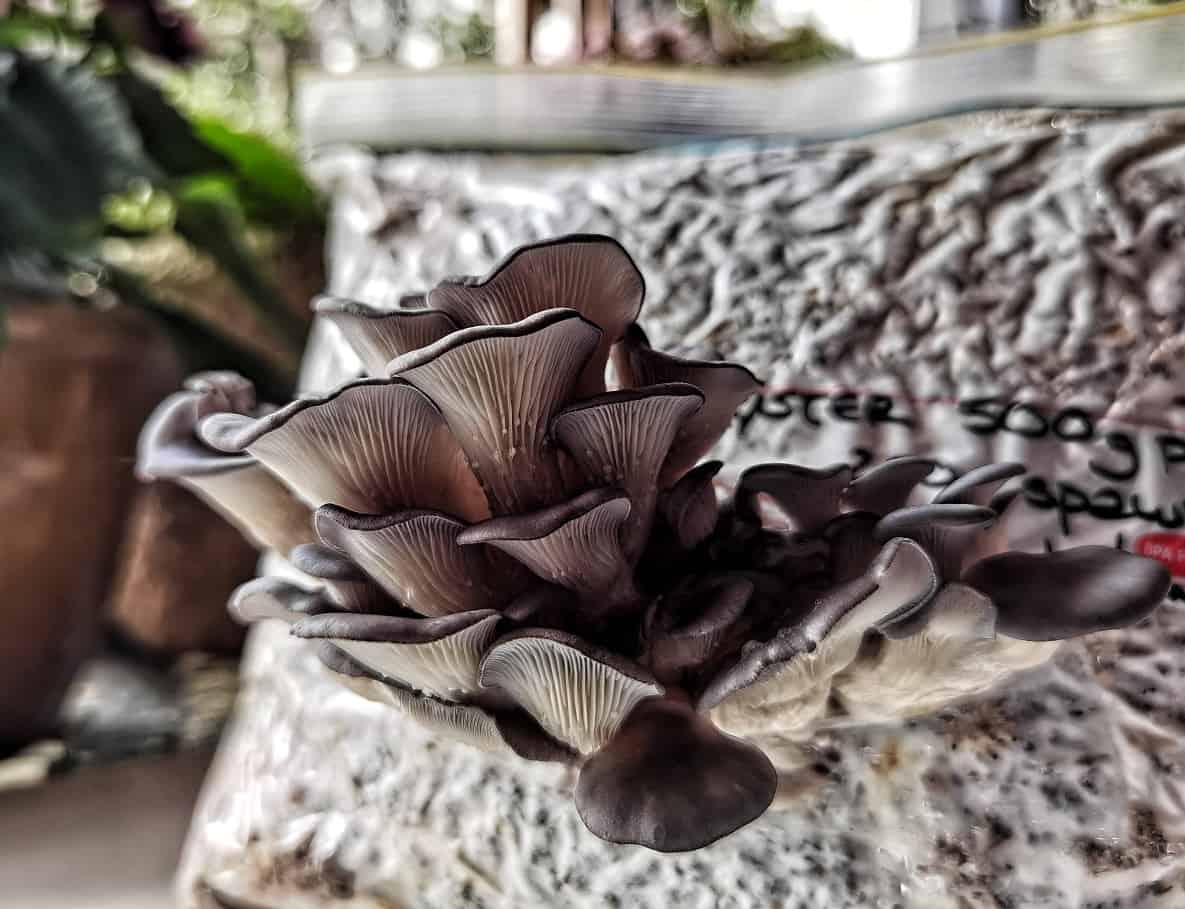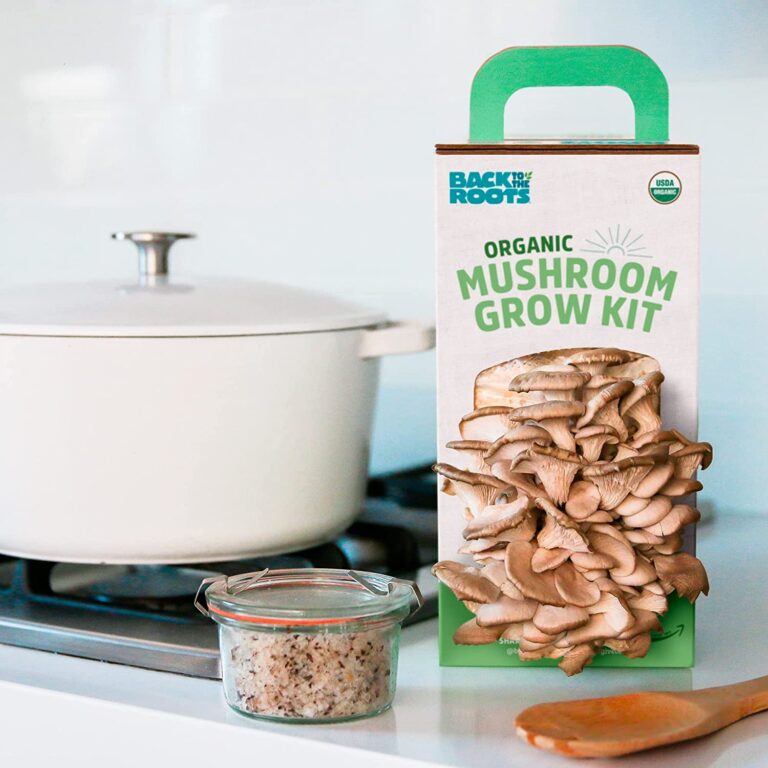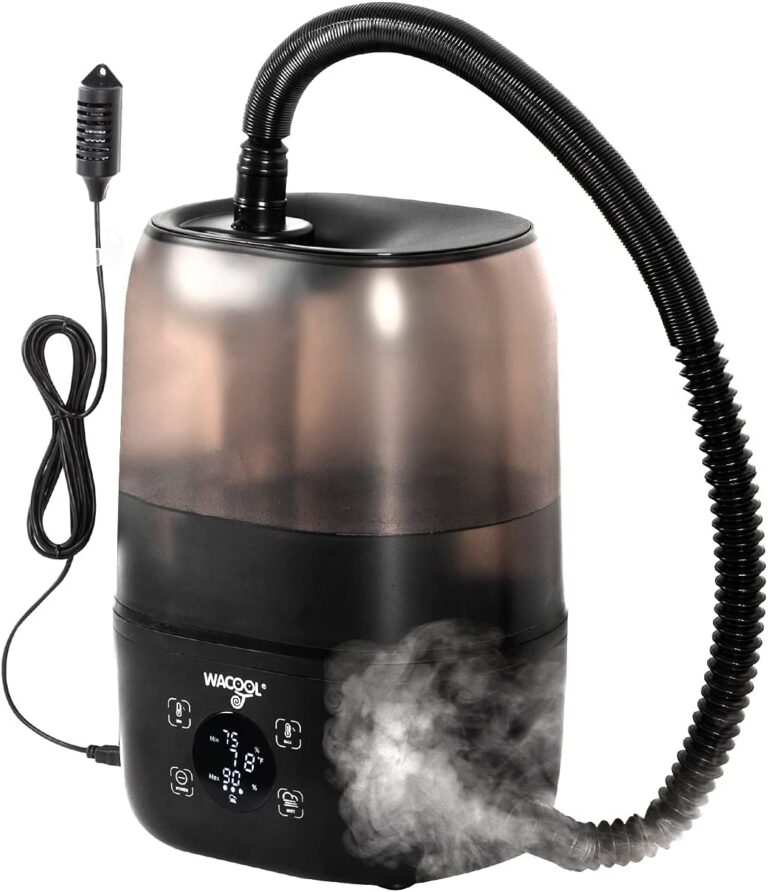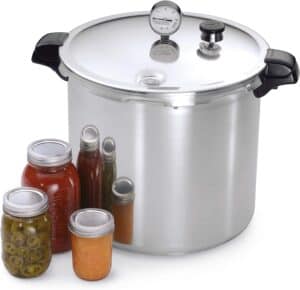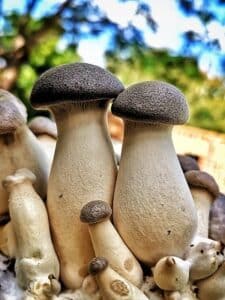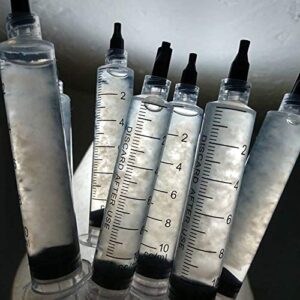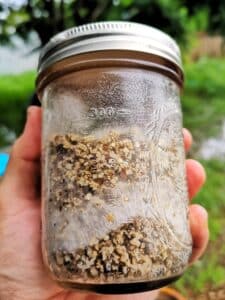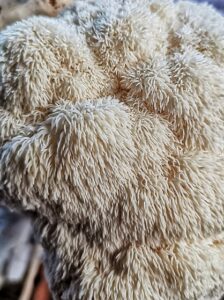The stunning bivalve-like blue oyster mushroom belongs to the genus, pleurotus. These mushrooms are found growing in clusters on dead and decaying hardwood during Spring & Autumn.
Although the blue oyster mushroom is an excellent candidate for beginners, it should be noted that it requires high levels of humidity and fresh air exchange to successfully trigger the formation of primordia.
This thick and meaty fungi will develop from deep, midnight blue pins into large, pale blue grey caps. Increased exposure to indirect sunlight may result in more vibrantly coloured caps.
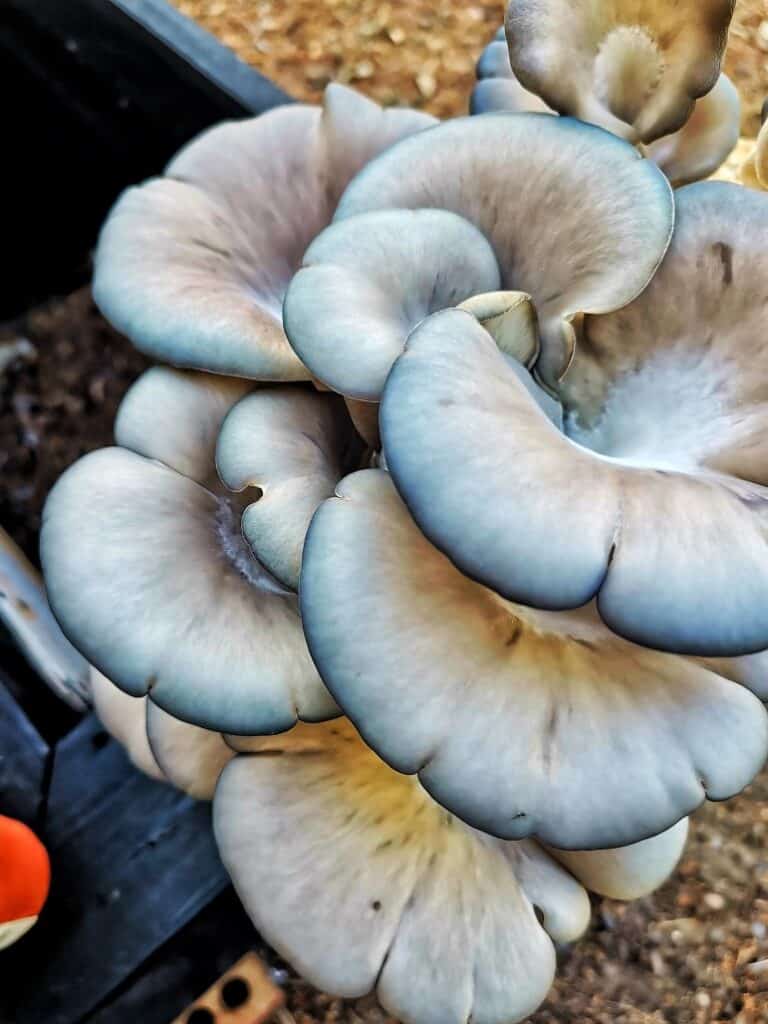
What Do Blue Oyster Mushrooms Taste Like?
Blue oyster mushrooms are gifted with thick and meaty stems and cap. Perfect for making into mushroom steaks on the grill or for adding to a rich broth for that extra dimension. Richer and more distinctive in flavour than the standard button mushroom, these blue oyster mushrooms aren’t overpowering making them incredibly versatile and appealing to most palates.
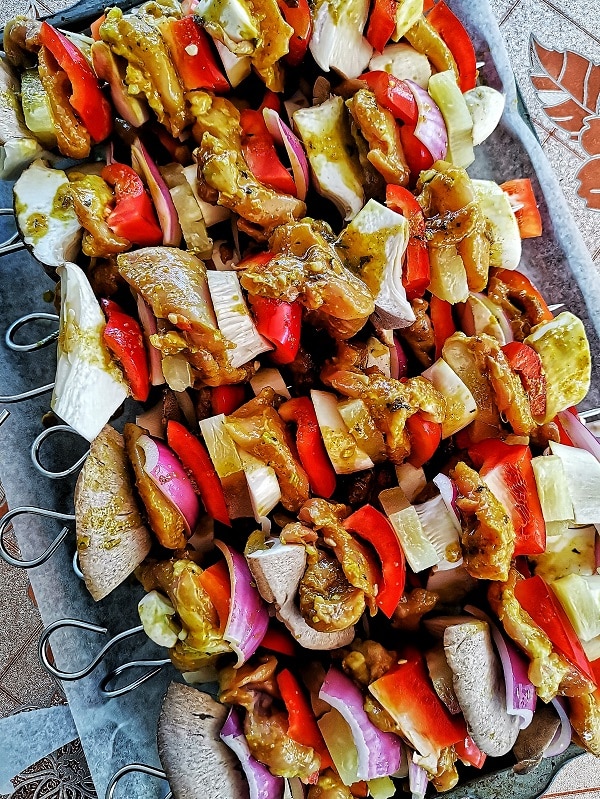
What Substrate For Growing Blue Oyster Mushrooms?
The blue oyster mushroom is a saprotroph that acts as a primary decomposer. It’s often found on decaying on dying trees consuming the dead wood. They benefit the forest by decomposing dead and decaying matter and returning vital elements and minerals to the ecosystem.
In terms of commercial production the blue oyster mushroom is grown on a supplemented hardwood substrate which is often sterilised.
Alternatively, it is grown on a wide range of cellulose rich materials such as sugar cane mulch, straw, and corn cob which has been pasteurised. Buckets or poly-tubing can be used to grow in.
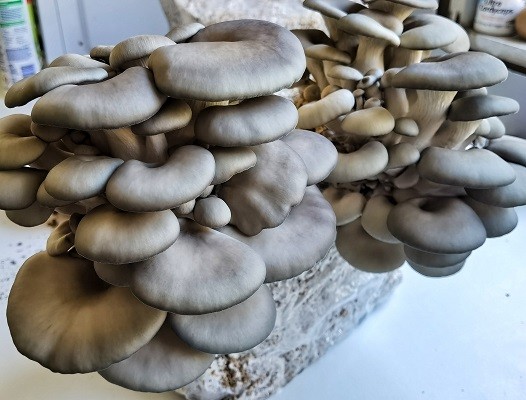
Blue Oyster Mycelium Appearance
Blue oyster mushroom mycelium is similar in appearance and structure to white oyster mushroom mycelium. The strands of hyphal threads will grow vigorously creating a thick, dense mat of mycelium if left undisturbed.
Like most species the mycelium will be noticeably less visible after agitation however the grain spawn will remain viable and ready for use.
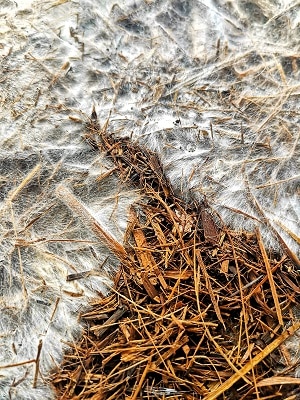
Blue Oyster Timeline
- Agar/Liquid Culture to Grain – 3 weeks
- Grain to Grain/Hardwood Substrate – 3 weeks
- Fruiting Chamber to 1st Flush – 1 week
- 1st Flush to 2nd Flush – 2/3 weeks (maintain high humidity)
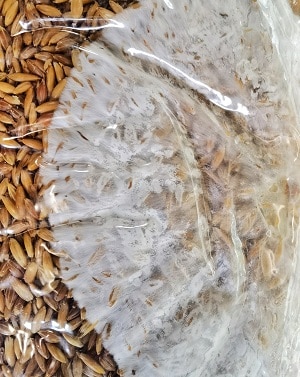
Blue Oyster Spawn Run & Fruiting Conditions
- Spawn Run – 10 – 25 degrees Celsius
- Fruiting Conditions – 7 – 20 degrees Celsius
- Humidity above 80%
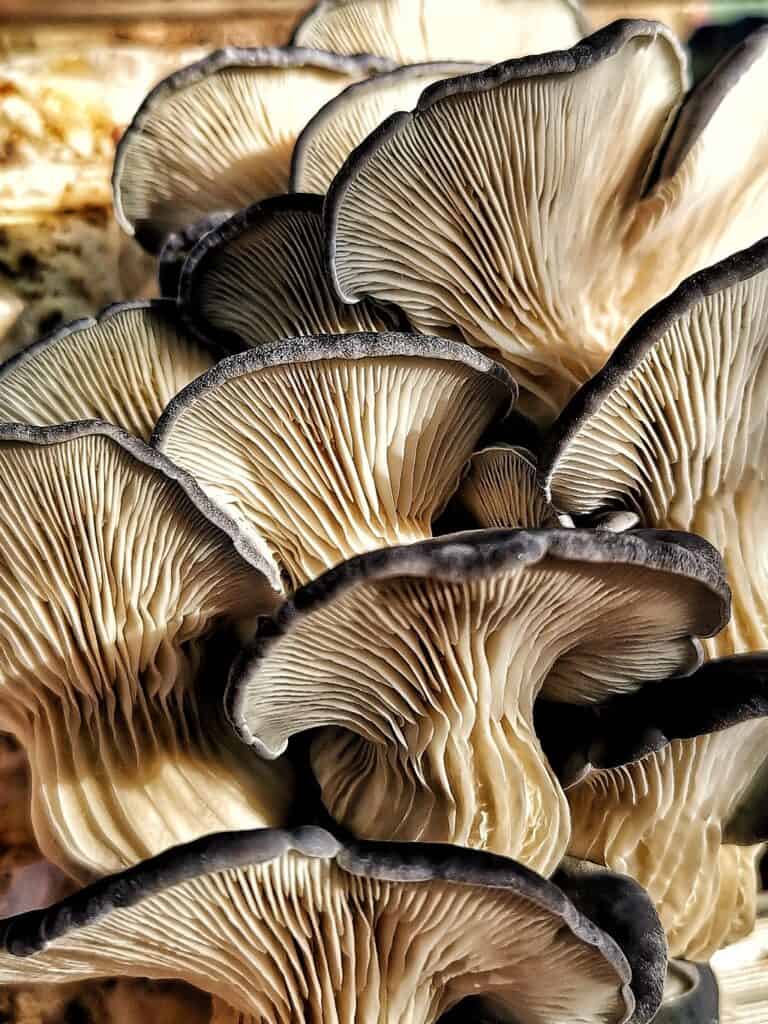
Blue Oyster Spawn Run & Fruiting Conditions
- Spawn Run – 10 – 25 degrees Celsius
- Fruiting Conditions – 7 – 20 degrees Celsius
- Humidity above 80%
